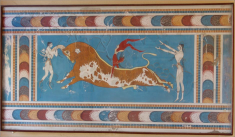Speaker
Description
The number density of small dark matter (DM) halos hosting faint high-redshift galaxies is sensitive to the DM free-streaming properties. However, constraining these DM properties is complicated by degeneracies with the uncertain baryonic physics governing star formation.
We use a flexible astrophysical model and a Bayesian inference framework to analyse ultra-violet (UV) luminosity functions (LFs) at $z=6-8$. We vary the complexity of the astrophysical galaxy model as well as the matter power spectrum (cold DM vs thermal relic warm DM), comparing their Bayesian evidences.
Adopting a conservatively wide prior range for the WDM particle mass, we show that the UV LFs at $z=6-8$ only weakly favour CDM over WDM. We find that particle masses ≲2 keV are rejected at a 95% credible level in all models that have a WDM-like power spectrum cutoff. This bound should increase to $\sim2.5$ keV with the James Webb Space Telescope (JWST).
Details
Dr. Anton Rudakovskyi, Bogolyubov Institute for Theoretical Physics of the National Academy of Sciences of Ukraine, Ukraine, http://bitp.kiev.ua/news
| Is this abstract from experiment? | No |
|---|---|
| Name of experiment and experimental site | N/A |
| Is the speaker for that presentation defined? | Yes |
| Internet talk | Yes |
